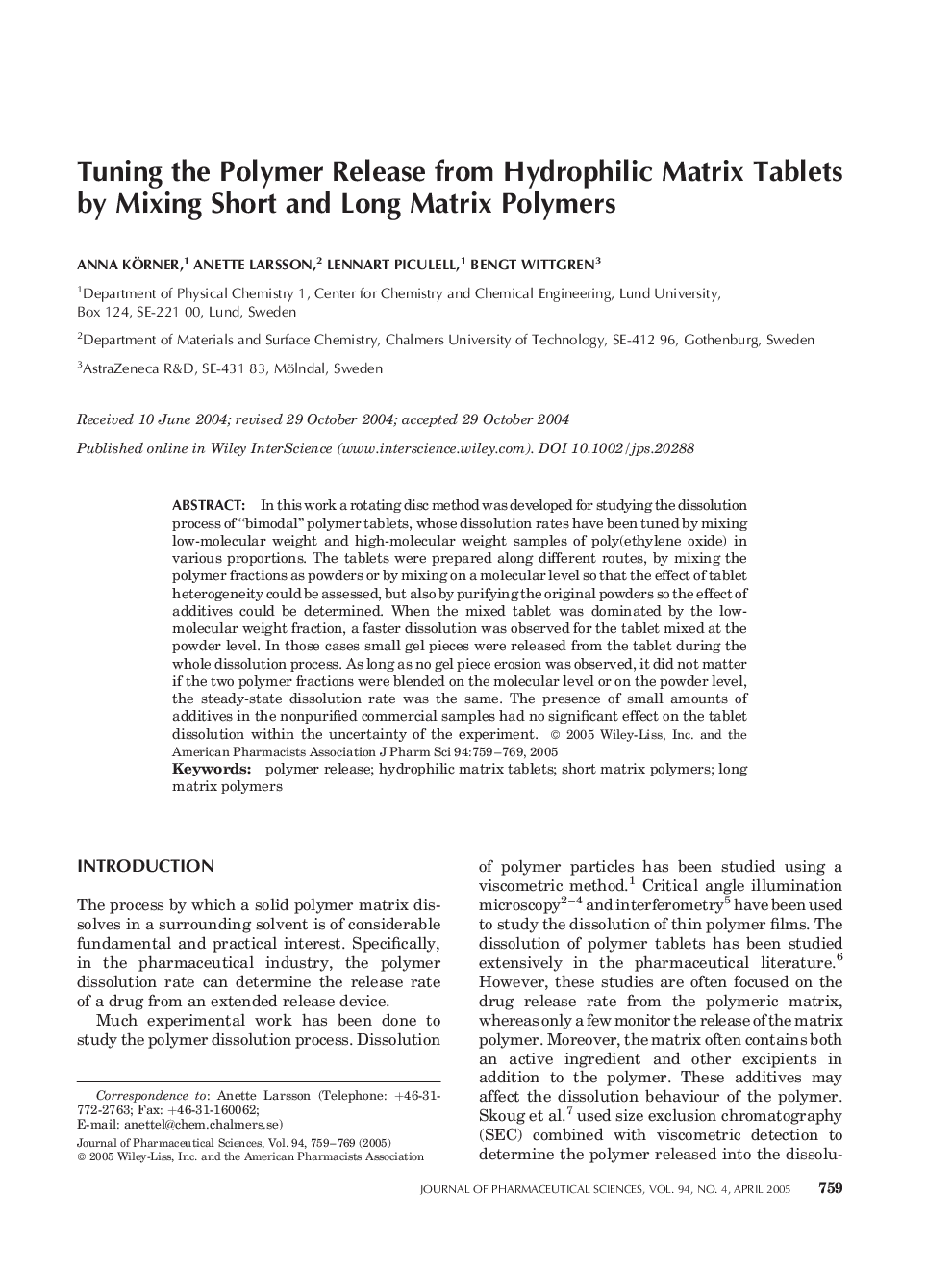| Article ID | Journal | Published Year | Pages | File Type |
|---|---|---|---|---|
| 8994951 | Journal of Pharmaceutical Sciences | 2005 | 11 Pages |
Abstract
In this work a rotating disc method was developed for studying the dissolution process of “bimodal” polymer tablets, whose dissolution rates have been tuned by mixing low-molecular weight and high-molecular weight samples of poly(ethylene oxide) in various proportions. The tablets were prepared along different routes, by mixing the polymer fractions as powders or by mixing on a molecular level so that the effect of tablet heterogeneity could be assessed, but also by purifying the original powders so the effect of additives could be determined. When the mixed tablet was dominated by the low-molecular weight fraction, a faster dissolution was observed for the tablet mixed at the powder level. In those cases small gel pieces were released from the tablet during the whole dissolution process. As long as no gel piece erosion was observed, it did not matter if the two polymer fractions were blended on the molecular level or on the powder level, the steady-state dissolution rate was the same. The presence of small amounts of additives in the nonpurified commercial samples had no significant effect on the tablet dissolution within the uncertainty of the experiment.
Keywords
Related Topics
Health Sciences
Pharmacology, Toxicology and Pharmaceutical Science
Drug Discovery
Authors
Anna Körner, Anette Larsson, Lennart Piculell, Bengt Wittgren,
